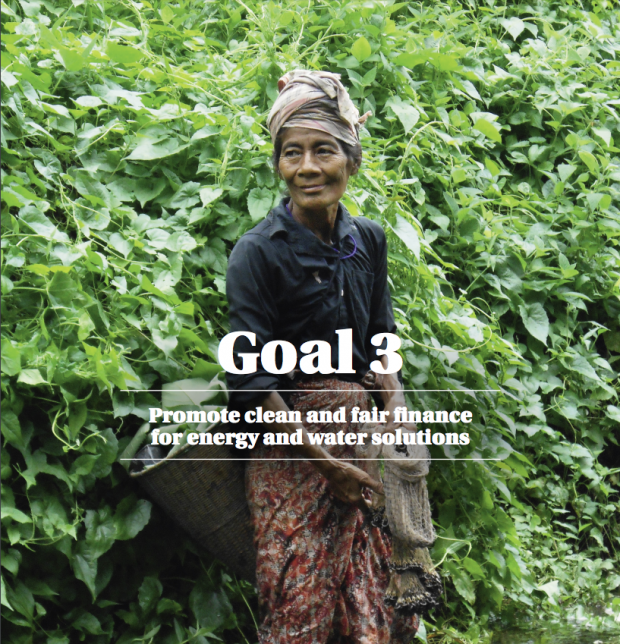Goal 3: Promote Clean and Fair Finance for Energy and Water Solutions
It matters where the money goes.
Too often, international financial institutions act in ways that harm people and their rivers. We advocated against the practices of the World Bank when it invested in destructive large dams. Now, we see new financial actors coming to the forefront: the Asian Infrastructure Investment Bank, the New Development Bank, and even the Green Climate Fund. Each of these institutions could invest in projects that harm communities and the rivers they rely on. We’re going to make sure that their financing goes to cleaner, safer approaches instead.
Large hydropower projects are immensely capital intensive, draining resources from decentralized, accessible and cleaner sources. Most of the costs accrue upfront. Large hydropower projects consistently exceed projected budgets and schedules, and developers underestimate environmental and social costs. Public utilities receive less revenue when projects don't produce as much power as expected, thus impacting borrowers' ability to repay loans. Governments are left on the hook, unable to repay their loans or deliver energy to their citizens. Dams are also particularly prone to corruption.
Dams are already producing less power than expected as increased droughts and floods disrupt flow regimes. The situation is likely to deteriorate further as climate change wreaks havoc on river hydrology, further worsening an already bleak financial risk outlook for large hydropower projects.
Securing a clean, fair and climate-resilient future requires massive investment in sustainable water and energy solutions. Financial institutions and mechanisms – government, government owned and private – have a considerable role to play in addressing climate change. To stave off the most devastating impacts of an ever-worsening climate crisis, the world must radically shift financial flows away from wasteful and harmful projects towards cleaner, safer approaches.
We will document and expose the financial risk of investing in large hydropower infrastructure, including cost overruns, as well as risks of poor project performance due to weak social and environmental assessments or sustained community resistance. We will monitor the lending and operational safeguards of multilateral development banks, including emerging institutions such as the Asian Infrastructure Investment Bank and the New Development Bank, as well as national development banks and nascent climate finance mechanisms. Where necessary, we will campaign against investments supporting destructive dams.
Thankfully, solutions exist. We will undertake independent research to provide a credible pathway to clean, decentralized energy and water infrastructure. And we will support financiers and financial mechanisms that catalyze further investment in renewable technologies such as wind, solar and off-river storage, and which support energy security for poor and marginalized communities.
By 2022, financing for renewables will have substantially increased as a percentage of energy investments, with a consequent significant reduction in funding for large hydropower -- meaning that new energy investments increasingly do no harm to rivers, delivering sustainable water and energy solutions which make significant contribution to addressing climate change.




